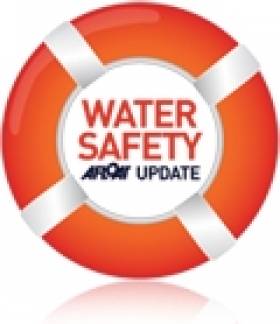Displaying items by tag: Jim Lawlor
International Honour for Irish Water Safety Official
The International Federation Of Swimming Teachers Associations (IFSTA) and Irish Water Safety (IWS) have announced the election of Jim Lawlor of Sligo as President West of IFSTA with responsibility for Europe, Africa, the Americas and Oceania at the World Conference of IFSTA in Holland on Thursday 9th Sept 2010.This position means that Jim Lawlor is also the Senior Vice President of the world body and he will become World President of IFSTA in 2012.
To put this achievement into perspective, a number of facts reflect the importance of IFSTA's contribution to water safety worldwide:
- 1,020,000 Members worldwide;
- 830,000 swimmers trained and certified every year;
- 27,185 Swimming Teachers / Instructors worldwide;
- 10,135 Examiners/ Assessors worldwide;
- 8,000 Swimming Teachers newly trained every year.
Jim is a member of the Council of IWS, a statutory body and he has represented IWS on the world board of IFSTA for five years. He is also Chairman of the Sports Commission within IWS and has chaired the Promotion Commission prior to taking responsibility for Sport.
Congratulations were immediately extended to Mr Lawlor by both the Minister of State at the Department of Environment, Heritage and Local Government, Mr Michael Finneran and also by the Chairman of Irish Water Safety, Mr Frank Nolan, who added that this was a wonderful occasion not only for Mr Lawlor but also for Irish Water Safety.
Speaking after his election, Jim stated that his election was a measure of the esteem in which his colleagues in Irish Water Safety were held by contemporaries around the world and he says he is honoured to have been chosen and he will continue to work with his colleagues worldwide to try to reduce the significant loss of life by drowning over the term of his appointment.
The latest report into worldwide drowning was published by WHO, based on statistics for 2002 and it showed that 403,000 persons drowned in 2002.This equates to 8% of all deaths due to injuries, both intentional and unintentional. The rate per 100,000 of population averaged 6.8 for the whole world but this varied greatly between countries. In some Asian countries the rate is over 10. In Ireland during the 1980s there was an average of over 200 deaths by drowning each year but that has steadily declined to last year's 145 which is a rate of .003%.
This is due to the many programmes promoted by Irish Water Safety which raise public awareness and address the four key issues associated with reducing death by drowning.
1. Removing the hazards - Drain baths, ponds etc
2. Creating Physical Barriers - Fence ponds, Protective Barrier Grills over wells etc
3. Protecting those at risk - Promoting learn to swim schemes such as the IWS PAWS (Primary Aquatics Water Safety), teaching water safety, using trained lifeguards.
4. Countering the damage - Teaching resuscitation





























































